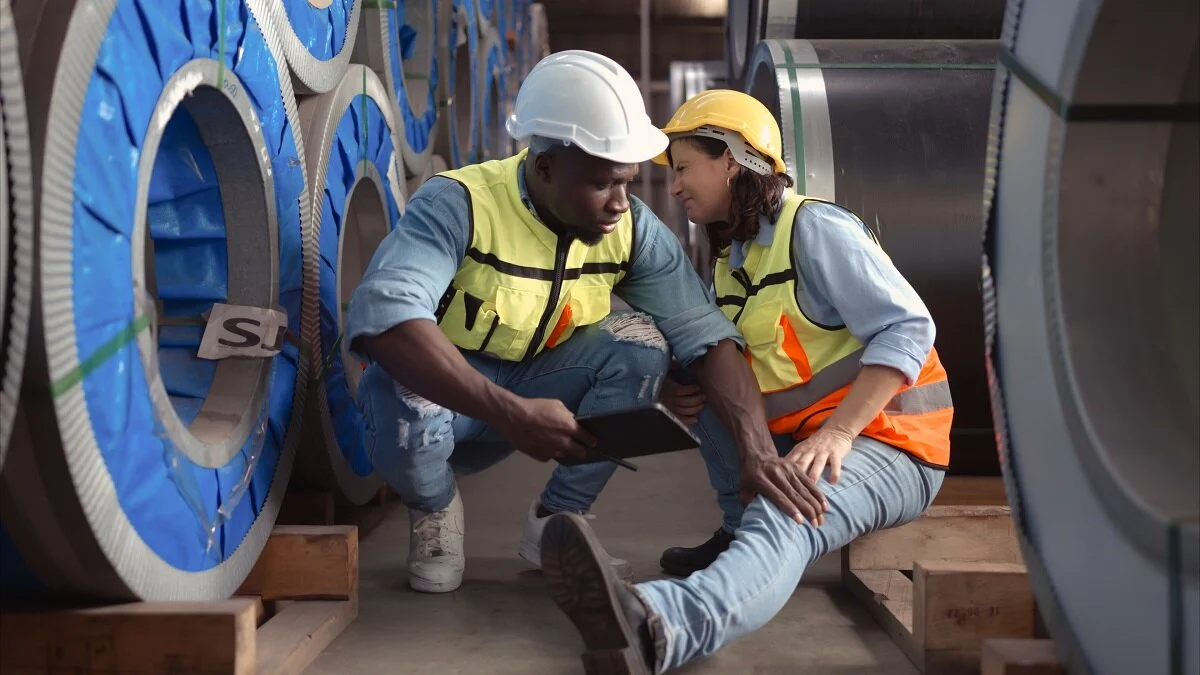Workplace safety is a paramount concern in today’s rapidly evolving industrial landscape. The integration of Artificial Intelligence (AI) into safety protocols is not just a trend but a transformative shift towards creating safer work environments. This article delves into how AI is redefining occupational safety, paving the way for more secure and efficient workplaces.
The Evolution of Occupational Safety
During the stages of industrialization, occupational safety rapidly evolved. Initially, it was a measure, but over time, it has progressed significantly to encompass stringent safety regulations. Now AI represents the advancement in this ongoing process.
AI: A Revolutionary Force in Workplace Safety
Artificial intelligence is revolutionizing job safety by making processes smarter and more proactive. By harnessing its capabilities to analyze large amounts of data and anticipate challenges, AI software and tools have transformed the game. They can identify situations in their surroundings. Ascertain whether individuals are adhering to safety protocols. Furthermore, these technologies make predictions that effectively reduce the risk of accidents.
The Impact of Real-Time AI on Safety Protocols
Real-time AI increases workplace safety by offering quick, in-depth information about potential risks. For example, Protex AI uses real-time artificial intelligence to improve workplace safety.
This use of AI displays how AI technology is shifting from safety measures to a more preventive and proactive approach that increases overall safety standards.
Enhancing Safety Training with AI
In addition to enhancing workplace safety, AI technology also plays a role in training and education. By providing training programs and simulating hazardous scenarios, AI enables workers to be better prepared for potential dangers they may encounter on the job. This tailored approach to safety training proves invaluable across work environments.
AI and Ergonomic Safety
AI tools are also making advancements in ensuring safety by examining designs and practices that prioritize the well-being of workers without causing any harm to their health. It also helps make workplaces more comfortable by looking at the data on movement, work habits, and posture. This will decrease the number of musculoskeletal diseases caused by the work.
Predictive Maintenance and Safety
AI aids in predictive maintenance, which is a critical aspect of occupational safety. AI-driven predictive maintenance also ensures that machinery is always safe to use through forecasting when it breaks down before it does. This will prevent accidents that could have been caused by broken equipment.
Addressing Mental Health in the Workplace
AI is also utilized in the workplace to enhance an individual’s mental well-being and ensure their safety. AI-powered tools can assist in identifying signs and symptoms of stress and burnout, enabling intervention. This comprehensive approach to safety underscores the importance of health in the workplace.
Navigating Ethical and Privacy Concerns
Using AI to improve safety raises privacy concerns that must be carefully addressed. Balancing the benefits of AI-driven safety enhancements with the need to respect worker privacy is crucial. When companies employ AI technologies, clear guidelines should be established, adhering to standards.
AI in Hazard Detection and Response
One of the applications of AI in occupational safety lies in identifying and mitigating potential risks. The system can continuously monitor work environments, detecting hazards that individuals might overlook. This rapid detection facilitates response times, potentially preventing accidents before they occur.
Customizing Safety Measures with AI
AI enables the adaptation of safety measures to suit workplaces. Every industry faces risks, which can be analyzed by AI systems to develop customized safety protocols. This ensures that not only are safety measures across various jobs, but they are also tailored to meet specific requirements.
The Role of AI in Compliance Monitoring
Ensuring the safety of your workers at the workplace relies heavily on adhering to rules and guidelines. Artificial intelligence can play a role in this aspect by observing work practices and ensuring compliance with safety regulations. It will constantly be monitored, which will help you keep safety standards at a high level and keep individuals from getting in trouble with the law for not following them.
AI-Powered Wearables in Safety
Wearable innovation driven by artificial technology has made the working environment more secure within modern strategy. These gadgets will monitor people’s crucial signs in difficult circumstances. Additionally, send a few crisis messages. The innovation is like having an individual safety helper who observes and continuously secures workers.
Future Prospects and Innovations
With occupational safety, the long run of AI looks secure and shining. Continuous advancements in AI technology will make strides in employment much more, making them beneficial and indeed more secure. Modern advancements in this region show how AI’s full potential to move forward in word-related security is being realized to a great extent.
Conclusion
Utilizing Artificial Intelligence to improve occupational safety is a significant advancement in protecting workers. AI is changing the rules and controls for security in the workplace by utilizing real-time information analysis and future experiences. Despite some challenges, the benefits of AI in this field are evident, promising a safer and more secure future for workers globally.
As we delve deeper into AI’s potential, it’s vital to ensure these advancements benefit both employees and employers, fostering a collaborative and safe work environment.
Also Read:
- 10 Reasons You Need To Invest in a Modern Employee Time Capture System
- 5 Strategies To Improve Machine Operations And Avoid Mistakes




